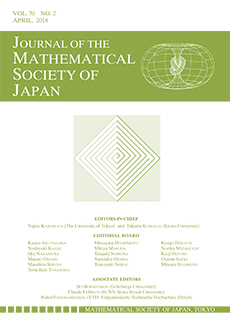Abstract
Let be the ring of 3-adic integers. For each number field , let denote the basic -extension over let and denote respectively the Iwasawa and -invariants of . Here a number field means a finite extension over the rational field contained in the complex field . Now let be a number field. Let -denote the infinite set of totally imaginary quadratic extensions in over (so that -coincides with the set in the text when is totally real); let denote the infinite set of quadratic extensions in over in which every infinite place of splits (so that coincides with the set in the text when is totally real). After studying the distribution of certain quadratic extensions over , that of certain cubic extensions over , and the relation between the two distributions, this paper proves that, if is totally real, then a subset of has an explicit positive density in -. The paper also proves that a subset of has an explicit positive density in if 3 does not divide the class number of but is divided by only one prime ideal of . Some consequences of the above results are added in the last part of the paper.
Citation
Kuniaki HORIE. Iwao KIMURA. "On quadratic extensions of number fields and Iwasawa invariants for basic -extensions." J. Math. Soc. Japan 51 (2) 387 - 402, April, 1999. https://doi.org/10.2969/jmsj/05120387
Information





